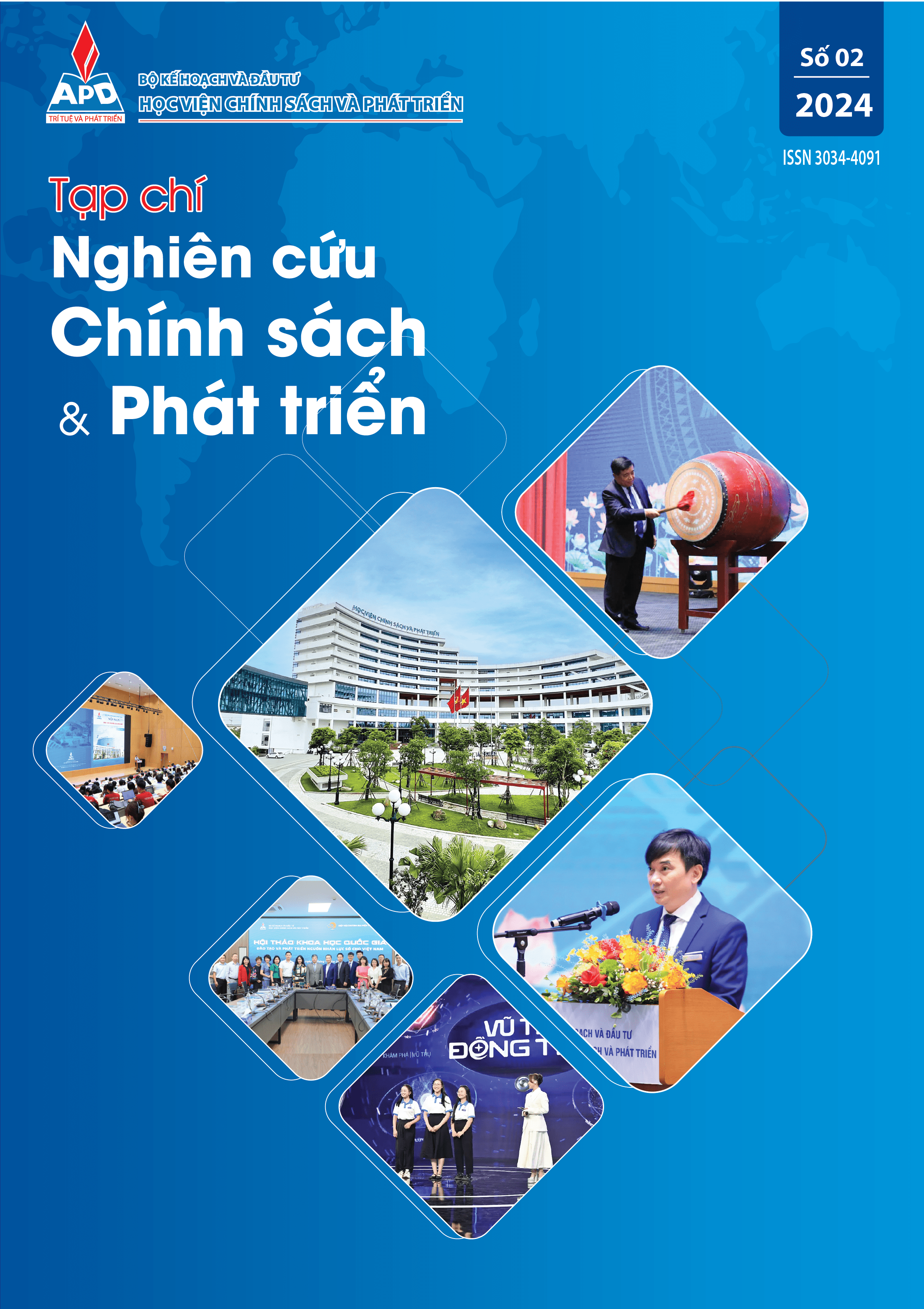Nghiên cứu dự đoán phá sản của doanh nghiệp sử dụng kỹ thuật học máy và SMOTEWB
Tải xuống
Đã Xuất bản
Cách trích dẫn
Số
Chuyên mục
Từ khóa:
dự báo phá sản, học máy, dữ liệu mất cân bằng, SMOTEWBTóm tắt
Trong bối cảnh kinh tế hiện đại, khả năng dự đoán phá sản của doanh nghiệp ngày càng trở nên quan trọng, đóng vai trò then chốt trong việc hỗ trợ các nhà quản lý, nhà đầu tư đưa ra quyết định nhằm giảm thiểu rủi ro tài chính. Để đáp ứng nhu cầu đó, nghiên cứu này đề xuất một phương pháp mới, sử dụng kết hợp các kỹ thuật học máy và chiến lược cân bằng dữ liệu. Mục tiêu chính là tăng cường độ chính xác trong dự đoán phá sản doanh nghiệp. Nghiên cứu được tiến hành qua các bước bao gồm tiền xử lý dữ liệu và phát triển các mô hình phân lớp dữ liệu, với sự tập trung đặc biệt vào việc tích hợp mô hình học máy cùng với phương pháp cân bằng dữ liệu SMOTEWB. Kết quả thực nghiệm cho thấy mô hình đề xuất không chỉ đạt được độ chính xác cao mà còn có tiềm năng ứng dụng rộng rãi trong thực tiễn.
Tài liệu tham khảo
1. Altman, E. I. (1968). Financial ratios, discriminant analysis and the prediction of corporate bankruptcy. The Journal of Finance, 23(4), 589-609.
2. Atiya, A. F. (2001). Bankruptcy prediction for credit risk using neural networks: A survey and new results. IEEE Transactions on Neural Networks, 12(4), 929-935.
3. Beaver, W. H. (1966). Financial ratios as predictors of failure. Journal of Accounting Research, 71-111.
4. Beynon, M. J., & Peel, M. J. (2001). Variable precision rough set theory and data discretisation: An application to corporate failure prediction. Omega, 29(6), 561-576.
5. Kotsiantis, S. B. (2013). Decision trees: A recent overview. Artificial Intelligence Review, 39, 261-283.
6. LeCun, Y., Bengio, Y., & Hinton, G. (2015). Deep learning. Nature, 521(7553), 436- 444.
7. Li, H., & Sun, J. (2010). Forecasting business failure in China using case-based reasoning with hybrid case representation. Journal of Forecasting, 29(5), 486-501.
8. Li, H., & Sun, J. (2012). Forecasting business failure: The use of nearest-neighbour support vectors and correcting imbalanced samples–Evidence from the Chinese hotel industry. Tourism Management, 33(3), 622-634.
9. Li, H., & Sun, J. (2013). Predicting business failure using an RSF-based case-based reasoning ensemble forecasting method. Journal of Forecasting, 32(2), 180-192.
10.Lin, F., Yeh, C. C., & Lee, M. Y. (2011). The use of hybrid manifold learning and support vector machines in the prediction of business failure. Knowledge-Based Systems, 24(1), 95-101.
11.Lin, W. Y., Hu, Y. H., & Tsai, C. F. (2011). Machine learning in financial crisis prediction: A survey. IEEE Transactions on Systems, Man, and Cybernetics, Part C (Applications and Reviews), 42(4), 421-436.
12.Manju, B. R., & Nair, A. R. (2019, December). Classification of cardiac arrhythmia of 12 lead ECG using combination of SMOTEWB, XGBoost and machine learning algorithms. In 2019 9th International Symposium on Embedded Computing and System Design (ISED) (pp. 1-7). IEEE.
13.McKee, T. E. (2003). Rough sets bankruptcy prediction models versus auditor signalling rates. Journal of Forecasting, 22(8), 569-586.
14.Ohlson, J. A. (1980). Financial ratios and the probabilistic prediction of bankruptcy. Journal of Accounting Research, 109-131.
15.Pisner, D. A., & Schnyer, D. M. (2020). Support vector machine. In Machine Learning (pp. 101-121). Academic Press.
16.Rigatti, S. J. (2017). Random forest. Journal of Insurance Medicine, 47(1), 31-39.
17.Sağlam, F., & Cengiz, M. A. (2022). A novel SMOTE-based resampling technique through noise detection and the boosting procedure. Expert Systems with Applications, 200, 117023.
18.Shinde, P. P., & Shah, S. (2018, August). A review of machine learning and deep learning applications. In 2018 Fourth International Conference on Computing Communication Control and Automation (ICCUBEA) (pp. 1-6). IEEE.
19.Taiwanese Bankruptcy Prediction. (2020). UCI Machine Learning Repository. https://doi.org/10.24432/C5004D.
20.Tsai, C. F., & Wu, J. W. (2008). Using neural network ensembles for bankruptcy prediction and credit scoring. Expert Systems with Applications, 34(4), 2639-2649.
21.Wang, L., & Wu, C. (2017). Business failure prediction based on two-stage selective ensemble with manifold learning algorithm and kernel-based fuzzy self-organizing map. Knowledge-Based Systems, 121, 99-110.
22.Ying, C., Qi-Guang, M., Jia-Chen, L., & Lin, G. (2013). Advance and prospects of AdaBoost algorithm. Acta Automatica Sinica, 39(6), 745-758.
23.Zhang, Z. (2016). Introduction to machine learning: K-nearest neighbors. Annals of Translational Medicine, 4(11)







